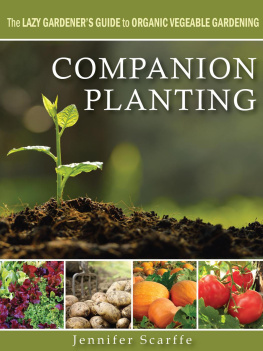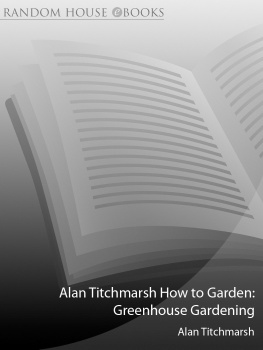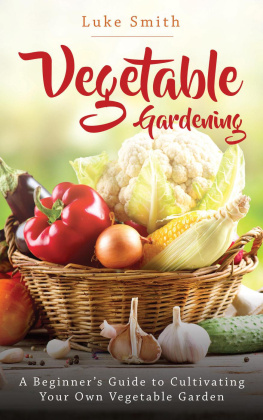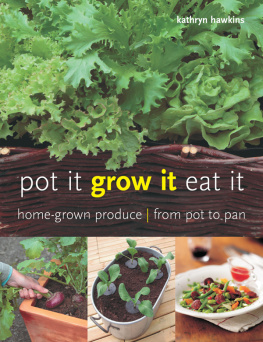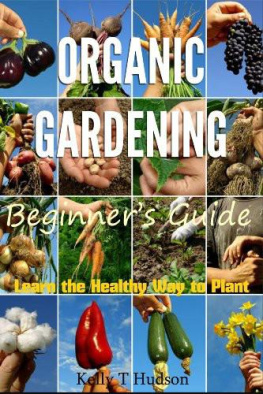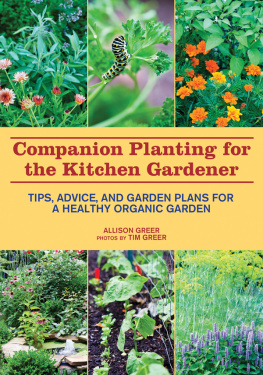
ABOUT THE AUTHOR
Alex Smith lives in West Sussex near Arundel. An author with wide horticultural experience, he is an RHS-qualified gardener and has a large allotment which he runs on organic principles. The harvest from the allotment, coupled with what he grows in the garden of his countryside cottage, provides a never-ending supply of fruit and vegetables for his family.
INTRODUCTION

In these days of anxieties about food miles and the use of pesticides in agriculture, growing your own food has become a hot topic. During the second half of the 20th century, with well-stocked supermarkets proliferating and the food shortages of the war years a fading memory, tending a vegetable patch was often regarded as a rather stuffy occupation for the middle-aged. Now, however, vegetable-growing has a revitalized image and people of all ages are interested in the most reliable way of knowing exactly where your food comes from producing it yourself.
You dont need to have a large garden to grow some produce, and a vegetable patch doesnt have to mean dull rows of all-green plants. Companion planting, using flowers and herbs to improve the health of the vegetables, brings a decorative effect as well as fulfilling a practical purpose. Vegetables such as Swiss chard varieties can provide striking colour, and beans can be found now in several attractive shades. Thinking about the visual effects you can achieve as well as what you want to eat allows you to incorporate vegetables happily into your garden without setting aside a special area that is purely functional.
However, if space is limited it makes sense to grow produce that is unusual or expensive rather than, say, potatoes. If your garden is really small, square foot gardening, with a raised bed no larger than 1.5 sq m (16 sq ft), divided into squares and intensively planted, will allow you a surprising amount of scope. Make the most of vertical space, growing plants up canes, and cluster herbs in pots conveniently near the kitchen door.
GETTING AN ALLOTMENT
If you want to grow food on a larger scale than your garden allows, the answer is to get an allotment on land provided by your local council. Five or ten years ago there was only limited interest in allotments and many were untended and overgrown. In recent years, however, demand has soared and waiting lists are long so it is important to consider the practicalities of having an allotment before you embark on what will probably be a time-consuming search. It is a major commitment of time and effort; on the other hand, it is a source of good exercise in the fresh air as well as providing a steady supply of home-grown food.
A simple search on the internet should give you a list of local sites and the telephone number of whom you should contact at your council. Alternatively, if you know the location of your nearest allotments, ask one of the plot holders how to make an application. Usually people are only too happy to help. You can also ask them about the site, what security arrangements there are and how fertile the land is.
While you may be on the waiting list for some time, you may eventually be given a choice of plots. Allotment holders change throughout the year; some find it too arduous as they get older, some lose interest, and a few may be excluded if they dont keep the plot to required standards. A plot may be left untended but not given up until its time to renew the subscription. So, frequently, several plots become available at the same time.
If you are offered a plot that is smaller than you want, take it at least you will get on to the site. A bigger plot will probably become free later and may be easier to lay hands on if you are already an allotment holder.
However, do not try to take on more than you can manage, as there are only so many hours in the day. A full-sized plot is 250 sq m (300 sq yd) definitely too much for one person in terms of both cultivation and the ability to eat all the produce. Unless you have a family of helpers it is better to take a smaller plot or consider sharing; most sites now provide half-sized plots.
PRACTICAL CONSIDERATIONS
If you can acquire an allotment near your home, this will make things much easier when it comes to getting there and, especially, transporting materials. If you plan to cycle there, remember that it is very difficult carrying bags of fertilizer or bricks by bike, so access by other modes of transport will be needed occasionally.
Check the quality of the plot. A few thistles and nettles are relatively easy to remove and indicate a fertile soil, but thicker-rooted perennial weeds such as brambles are more difficult to get rid of and could involve a lot of hard digging work.
Even with a water butt to collect rainwater you may need to rely upon the sites water supply for irrigation, so consider the distance to the nearest access point water is heavy to carry. Avoid sites with shady trees as most crops require good sunlight to thrive. Remember to take this into account if you are viewing the plot in winter bare trees may be transformed into very leafy shade in summer. However, smaller hedges and bushes may be good windbreaks.
PART 1
STARTING A VEGETABLE PLOT

TOOLS

Tools are of course essential to managing a vegetable plot. They do not need to be expensive, but before buying check that they will be strong enough to do the job some modern tools have a tendency to snap when the going gets tough. Looking around boot fairs for tools made in the old-fashioned way with wooden shafts worn smooth by constant usage can pay dividends. Here are some of the basic tools you will need:
Spade The essential tool for digging, so choose a good make with a sharp blade. Test it for size in the shop. Stainless steel blades are easy to clean but they are more expensive. Carbon steel spades are probably the strongest as they have no join between the blade and shaft; these are more easily found at a builders merchant than a garden centre. Spades are not to be confused with shovels, which have raised edges for scooping up loose material.
Fork With four prongs, a fork sometimes penetrates the ground more easily than a spade and may be better for turning heavy or wet soil. It is also useful for lifting clumps of weeds as you can shake off the valuable topsoil before disposing of the weeds.
Hoes and rakes Although mainly intended for weeding, hoes can be used for aerating the soil and forming seed drills. A Dutch hoe has an angled head designed to slice through weeds. A rake is useful when levelling soil.
Hand fork This tool is great for weeding and taking out plants undamaged.
Hand trowel Buy the best and strongest you can afford, as they are always in use and are essential for digging small holes.
Dibber This pointed wooden stick is for making holes in the ground for seeds or small seedlings.
Secateurs These are in use all year round for cutting and pruning, so buy a good-quality stainless steel set as the cheaper ones tend to break easily.
Watering can Hoses are forbidden on many allotments and recent hot summers have also seen the introduction of blanket hose-pipe bans. Two watering cans may be best. Use strong plastic ones to lighten the load. Water is heavy a full 9 litre (2 gal) watering can weighs about 8 kg (18 lb).
Next page


![Dowding - The Year-Round Vegetable Gardener’s Bible [7 Books in 1]](/uploads/posts/book/453239/thumbs/dowding-the-year-round-vegetable-gardener-s.jpg)
